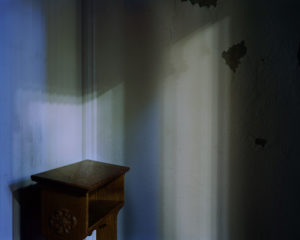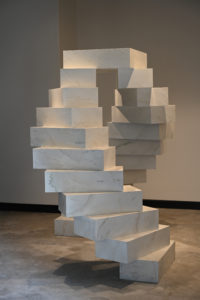Askia Bilal was born in New York City and is based in the Midwest. Working in acrylic, assorted dry media, and a method of collage that recycles his own paintings, he creates multilayered narratives that draw on a variety of artistic and intellectual traditions, with recurring themes of cycles, paradox, and layers.
Image: How has your religious and cultural background contributed to your work?
AB: One of the primary forces that drives my creative practice comes from a belief that there is a deeper sense of purpose and meaning to life linked to a higher power. I use art as a tool to ask questions about that meaning, to make sense of the world and my place in it as a conscious being. Faith helps me grapple with the existential questions.
I experience Islam as a vast and rich tradition that flows from a Source from which other traditions have also emerged. Islam has encouraged me to reflect deeply, to ask questions, to gain appreciation for other cultures and traditions, to try to become more aware of myself, of others, of the Creator; all of these are essential to my work.
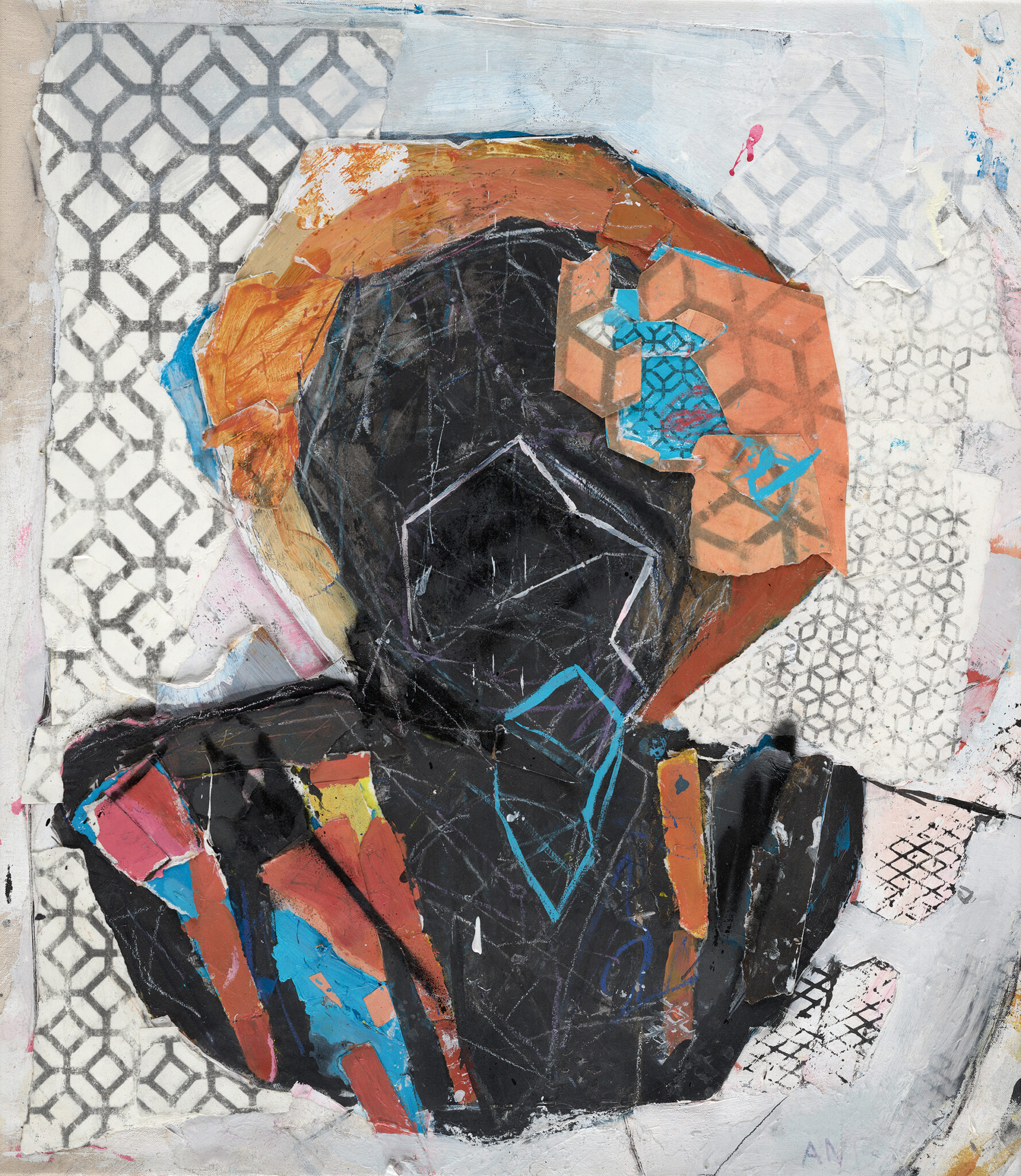
Askia Bilal. Non-Portrait V: Our Beautiful Skin-Rags Fell into Infinity, 2021. Acrylic, tar paper, pastel, spray paint, painted paper, and image transfer on paper mounted on canvas. 30 x 26 inches.
Image: Do you have any particular rituals when you’re working in your studio, whether straightforwardly religious or not?
AB: My routine in the studio varies. Sometimes when I get there I feel an urgency to work, and I can see clearly what I need to do and can even work on several pieces at the same time. Other times, I have to stare at a piece for a long time to determine how it needs to develop. The overall process of making art is ritualistic for me: I’m trying to access a greater rhythm, something larger than myself.
Image: How did the events of the past few years surface in your work, from the pandemic to the protests of police violence against people of color?
AB: Both served as catalysts for my work. The pandemic disrupted all sense of normalcy and forced the world into isolation. At that time, I prioritized making art again, something that I had not done consistently for several years. The murder of George Floyd and the subsequent protests prompted a new body of work called Non-Portraits, in which I began to address my experience of Blackness more directly. The Non-Portraits center Blackness in an effort to confront and deconstruct ingrained social conceptions of it. I’m negotiating a paradoxical space between invisibility and hypervisibility, the conscious and unconscious, portraiture and iconoclasm, figuration and abstraction. I’ve found this space where I weave together different strands of my identity and incorporate a range of references. Ultimately, I am trying to make archetypes that are windows to the mysteries of human existence.
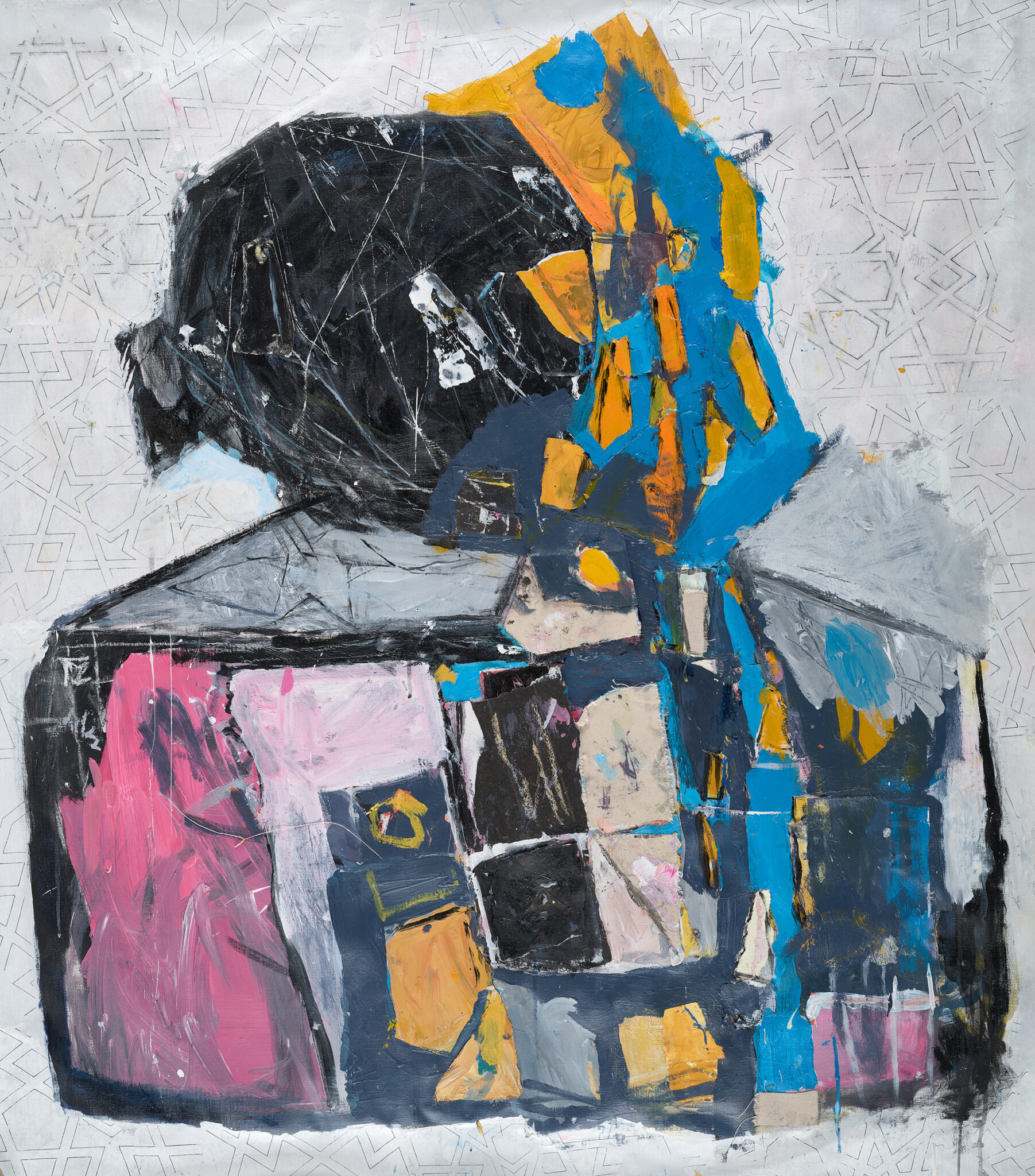
Askia Bilal. Non-Portrait X, 2022. Acrylic, canvas, tar paper, painted paper, and image transfer on unstretched pre-primed Belgian linen. 52 x 44 inches.
Image: In the Non-Portraits series, there are intricate geometric backgrounds that suggest motifs from Islamic art. Can you talk about the significance of those elements?
AB: In general, the geometric patterns signify the infinite. They look as if they could repeat forever, which brings to mind all sorts of wonder—both within us and beyond us. They add a layer that enables me to dialogue with a tradition that I greatly revere.

Askia Bilal. Cyclops Teeth Pyramid Scheme, 2011–21. Acrylic, tar paper, pastel, spray paint, painted paper, cardboard, india ink, staples, and nails on canvas. 56 x 55 inches.
Image: Who are some of the artists who influence you, past and present? I’m especially keen to hear more about the inspiration you find in Anselm Kiefer.
AB: I am indebted to many artists; art does not happen in a vacuum. Some of my influences are Leonardo da Vinci, Willem de Kooning, Lee Bontecou, Jean-Michel Basquiat, Richard Serra, and Kerry James Marshall.
The first time I encountered Kiefer’s work was as an undergraduate, when I saw Breaking of the Vessels (1990) at the Saint Louis Art Museum. I did not understand it and did not like it. When I saw it again years later as a more experienced artist, I felt the work immediately, and it had a profound impact on me. I recognize something in it that I have been attempting to communicate in my own work and voice. Kiefer’s work evokes a sense of mystery, weight, and monumentality that resonates deeply.
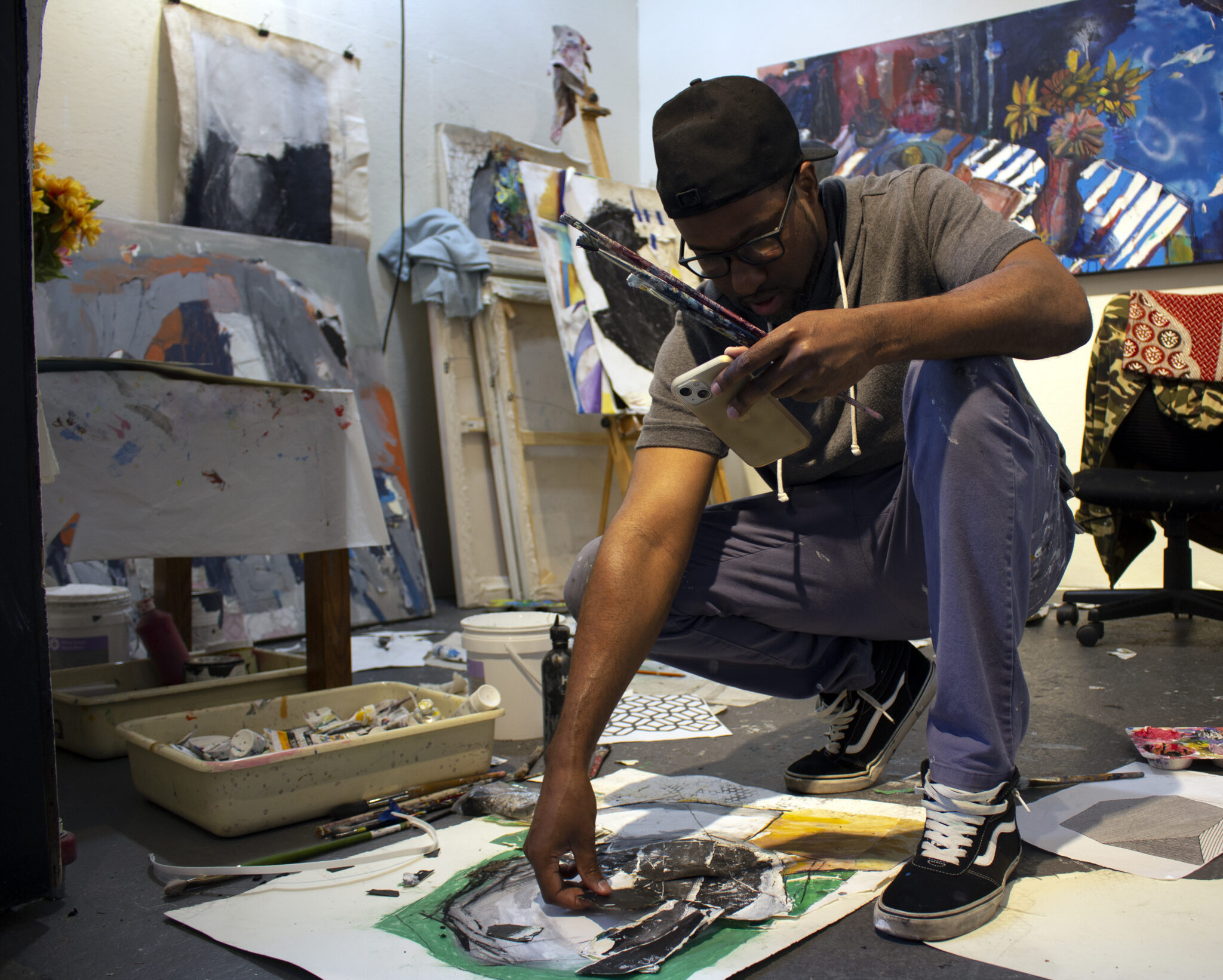
Askia Bilal in his studio. Photo: A Piece of You Productions.
Image: Thinking of Breaking of the Vessels, which is inspired by kabbalah, would you say there is a mystic element in how you create your work?
AB: I’d like for my work to have a mystic quality. I think successful art draws you in and then holds you there, revealing itself over time in new ways. It can contain some transcendental truth. Successful art poses questions without providing clear answers; it makes people feel and contemplate, creating a space where they can be in wonder and become aware of something within and beyond the self. It awakens us to the world in a new way. I think mystery and awe are essential to the human experience, and art can continue to provide those things. If my work succeeds at any of the above for someone, I’d be content.
On the cover: Askia Bilal. Non-Portrait A, 2022. Acrylic, gesso, tar paper, oil stick, charcoal, india ink, pen, and marker on paper. 15 x 11 inches.





